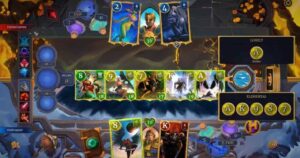A Chaotic New Brawler Lands on Apple Devices
What the Clash just made its mobile debut on iOS, bringing its brand of over-the-top arena combat to the touchscreen crowd. It’s not a technical fighter or a traditional action game. Instead, it leans into the absurd, with unpredictable physics, floppy animations, and matches that often feel one bad jump away from disaster.
The game focuses on short-form multiplayer sessions where players battle it out in tight arenas using improvised attacks, awkward jumps, and exaggerated ragdoll mechanics. It’s built for messiness, not mastery.
Combat Built Around Ragdoll Physics
The core of What the Clash is its intentionally loose physics. Characters swing weapons, punch, and stumble more like crash-test dummies than trained fighters. The result is often hilarious and rarely clean. It’s a formula that prioritizes surprise over precision.
There is a control system underneath the chaos, but it’s lightweight by design. It rewards good timing and positioning, but outcomes are just as often decided by bad bounces or last-second blunders. If you’ve played titles like Human: Fall Flat or Gang Beasts, the tone will feel familiar.
Arena Maps Designed for Fast, Silly Engagements
The environments are tight, colorful, and filled with hazards. Some arenas feature collapsing platforms or moving traps that add another layer of randomness. Others rely on verticality or confined space to force players into scrappy, awkward confrontations.
Each match moves quickly, and the game clearly leans toward casual pacing. This isn’t a ranked ladder grind. It’s the kind of game where one well-placed punch or an unlucky trip into a pit decides everything.
Visual Style and UI Keep Things Accessible
Graphically, What the Clash goes simple and exaggerated. Characters are stylized, with rubbery limbs and big expressions. The UI keeps everything clear, with minimal clutter and a focus on quick matchmaking and replays.
The sound design matches the visual tone — exaggerated thwacks, silly voice clips, and dramatic win poses that underline the comedy. It’s all designed to support the tone rather than distract from the gameplay loop.
Multiplayer Focus With Drop-In Simplicity
The game supports multiplayer battles right out of the gate, with quick lobbies and straightforward matchmaking. There’s no deep customization or complex party systems. Instead, the structure encourages short bursts of chaotic play, especially with friends or in local co-op.
It’s the kind of mobile title built for five-minute sessions that spiral into fifteen. Whether it holds attention over time will depend on how often the maps, modes, or cosmetics rotate. But as a pick-up-and-flail kind of game, it lands with clarity. It knows exactly how silly it wants to be — and leans into it without hesitation.
Mobile Game Addict & Casual Gaming Critic
She’s played more mobile games than most people have downloaded. TAPTAPTAP is fast, fierce, and funny — reviewing the latest hypercasual hits, idle clickers, and gacha grinds with real talk and zero fluff.




